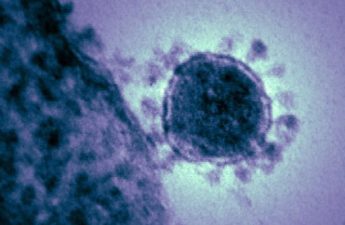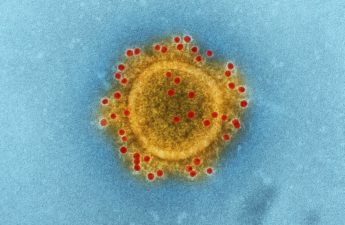
From UW Medicine
Children and adults infected with SARS-CoV-2, the virus that causes COVID-19, have similar levels of the virus if they have symptoms – and similar levels if they do not, University of Washington School of Medicine researchers have found.
“We found that in terms of viral levels, children are similar to adults,” said Dr. Erin Chung, a pediatric infectious disease fellow at the University of Washington and Seattle Children’s Hospital and lead author of the study which is reported today in the journal JAMA Pediatrics.
“There were no significant differences in levels between asymptomatic children and asymptomatic adults, so asymptomatic infected children should be considered as infectious as asymptomatic infected adults until we know more about the role of viral levels in children and transmission,” Chung said.
Since the outbreak of the pandemic, health experts have been concerned that infected children might spread the disease undetected, because children tend to have milder or no symptoms. This is the case with the flu, where children can have high viral levels but no symptoms. This concern has led to such measures as school closures.
But little is known about the type of symptoms infected children in the community have and whether those symptoms are related to their viral levels. This is important to know because higher viral levels are associated with more viral shedding and a greater risk of disease transmission.
To find out more about the relationship between symptoms and viral levels in infected children and adults in the community, the researchers looked at positive SARS-CoV-2 test results collected across King County, which includes Seattle, from March 23 to November 9 in 2020.
The samples were collected by Seattle Coronavirus Assessment Network (SCAN), which was created early in the pandemic to track the virus in the community. To participate, residents of King County enroll online whether or not they had symptoms. Enrollees fill out a questionnaire that includes questions about symptoms of COVID-19 or recent contact with someone with COVID-19. Participants chosen for testing were selected from different parts of the county to make the sample as representative of the community as possible.
Those who were selected received a home test kit within hours that contained a swab that they could use to collect a sample from their nostrils. The sample was then taken by courier to the laboratory where the level of SARS-CoV-2 RNA in the sample was determined.
Of the more than 37,000 samples collected during the study, the researchers identified 555 individual positive tests. 123 (22%) were children and 432 (78%) were adults. The researchers found that fewer children had symptoms than did adults, 62% of children vs. 95% of adults; and children with symptoms tended to have fewer symptoms, 1.6, on average, compared to 4.5 among adults. Children tended to have runny or stuffy noses, fever, headache and cough, while adults more frequently reported headache, cough and fatigue.
Viral levels, however, tended to be the same in children and adults. Lower levels were seen among those without symptoms and higher levels among those with symptoms, regardless of age.
“What our findings tell us is that symptomatic people — either children or adults — have higher viral loads and are more likely to shed virus,” said Dr. Helen Y. Chu, associate professor of medicine, Division of Allergy and Infectious Diseases, and the paper’s senior author. “But it also tells you that infected children can also have few or milder symptoms or no symptoms at all, so symptom-based screening to decide whether children should be in school, for example, will not be effective by itself. Masks, ventilation, and other prevention measures are really important.”
This study was funded by the Bill & Melinda Gates Foundation and supported in part by grants from the National Institutes of Health (T32HD007233, R35 GM119774-01).
The title of the JAMA Pediatrics paper is: Comparison of Symptoms and RNA Levels in Children and Adults With SARS-CoV-2 Infection in the Community Setting.


